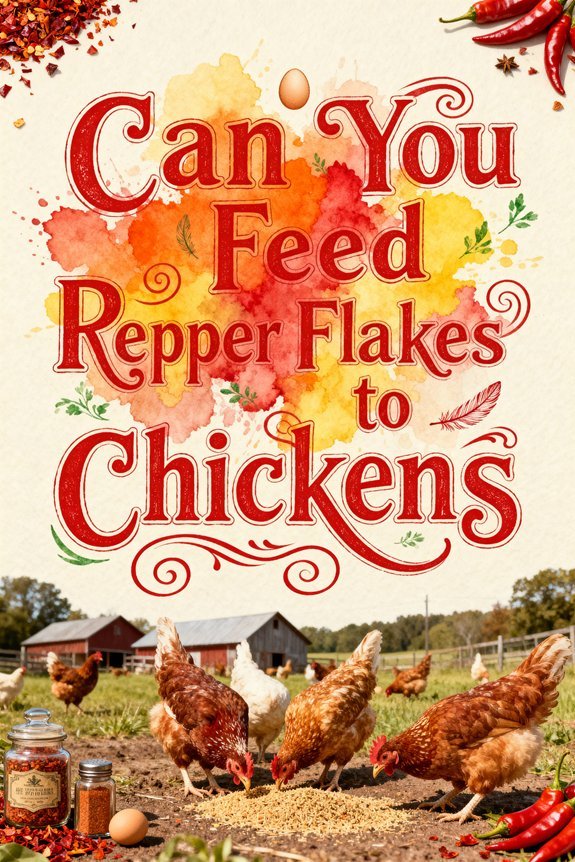What Is the Safe Betadine Dilution Rate for Treating Chickens?
For treating chickens with Betadine, you’ll need different dilution ratios depending on the application. Use a 50/50 mixture of Betadine and water for wound care and injuries, while drinking water treatment requires 1mL of Betadine per 25-50L. Apply the diluted solution with a clean cotton ball or swab until the area appears light brown. Monitor your bird closely for any adverse reactions, as proper dilution and application techniques are essential for ideal healing results.
Understanding Betadine and Its Role in Poultry Care
Betadine, a powerful antiseptic containing povidone-iodine, serves as an essential tool in poultry wound care and infection prevention. When you’re treating chickens, you’ll find that its broad-spectrum antimicrobial properties make it effective against bacteria, viruses, and fungi. The povidone iodine properties work by releasing free iodine, which penetrates microbial cell walls and deactivates proteins.
You’ll primarily use Betadine for cleaning and disinfecting skin lesions, treating fowl pox sores, and managing wound infections in your flock. Its antibacterial mechanisms create a protective barrier that helps prevent secondary infections while promoting faster healing. When properly applied through gentle dabbing or swabbing, it’s particularly effective at drying lesions and allowing them to form protective crusts. For respiratory issues like wet pox, you can carefully use it to address mucus discharge. When treating fowl pox specifically, applying Betadine helps prevent bacterial complications while the virus runs its course.
Safe Dilution Ratios for Different Applications
Four key dilution ratios are crucial when using Betadine for your chickens, each tailored to specific applications. For wound treatment, use a 50/50 mixture of Betadine and water to safely clean cuts and scrapes. When adding to drinking water, maintain a ratio of 1mL Betadine per 25-50L water to avoid tissue damage. For environmental disinfection, you’ll need roughly one gallon of diluted solution per 150-200 square feet of surface area. When treating external parasites, follow a 25% Betadine to 75% carrier substance ratio. Starting with 10% providone iodine ensures proper concentration levels for all dilutions. These dilution techniques guarantee you’re providing effective treatment while preventing irritation or toxicity. Always follow these application guidelines carefully, as over-concentrated solutions can harm your birds or damage equipment. Remember that proper dilution maintains bactericidal activity while guaranteeing safety. When disinfecting your coop, ensure complete coverage of the recommended 4 square feet per bird to maintain proper hygiene standards. For birds experiencing muscle tension or toxicity issues, consider supplementing Betadine treatments with therapeutic salt baths to enhance healing and comfort.
Proper Application Methods and Techniques
When treating chickens with Betadine solution, proper application technique is essential for best healing and safety. First, isolate your injured bird and thoroughly clean your hands. Using a cotton ball or swab, apply the diluted Betadine solution evenly across the wound area. Your dilution should appear light brown, never full strength, to prevent skin irritation. Consider using Blue-Kote spray treatment after the Betadine dries to prevent other chickens from pecking at the wound.
For deeper wounds, use a 12cc or 20cc syringe to flush the area thoroughly before application. After the Betadine treatment, you can apply Silver Sulfadiazine or Manuka honey as a protective dressing. Ensure proper wound care is important by cleaning and disinfecting the surrounding area to prevent secondary infections. Monitor the wound daily, reapplying Betadine during each inspection until healing occurs. If you notice any adverse reactions or worsening conditions, discontinue use and consult a veterinarian for alternative wound care options. With proper treatment, most chickens can recover quickly and maintain their robust health for 8-10 years.
Warning Signs and Safety Precautions
Safe administration of any wound treatment requires careful monitoring for adverse reactions. When using Betadine on your chickens, watch for infection signs like redness, swelling, or deteriorating wound conditions. Stop treatment immediately if you notice skin irritation, caustic burns, or behavioral changes such as reduced eating or lethargy.
Follow these critical dosage guidelines: dilute 10% Betadine stock to a 1% or lower concentration using a 1:10 ratio. Never apply undiluted Betadine directly to wounds. Use fresh solutions and clean equipment for each application to prevent contamination. Regular cleaning of treatment areas helps prevent bacterial colonization and reduces health risks. Store the solution away from sunlight and extreme temperatures, and don’t mix it with other disinfectants. If you suspect systemic toxicity or observe persistent wound issues, consult a veterinarian immediately.
Common Treatment Scenarios and Best Practices
Treating common chicken injuries requires precise Betadine dilution and systematic wound care protocols. For most common injuries, you’ll want to use a 1:1 dilution (50% Betadine to 50% water) to clean and disinfect wounds. Apply this solution to pecked crests, scratches, cuts, and post-surgical sites using cotton balls or swabs for controlled application. In cases of advanced bumblefoot infection, surgical removal of abscesses may be necessary alongside antiseptic treatment. When applying medication to eye injuries, secure gentle restraint is essential for effective treatment.
Monitor the healing process by applying the diluted solution daily or twice daily until you see clear signs of improvement. When treating multiple birds, always prepare fresh solutions to prevent cross-contamination. For scaly leg mites, you can combine diluted Betadine with Vaseline for targeted treatment. Since scaly leg mites can lead to poor roosting behavior, it’s critical to begin treatment promptly. Remember to clean each wound thoroughly before applying the antiseptic solution, and never use undiluted Betadine directly on sensitive tissues.
Monitoring Your Chicken’s Response to Treatment
After implementing your Betadine treatment protocol, close monitoring becomes the key to ensuring successful recovery. Watch for signs of wound healing, including reduced redness, swelling, and discharge. You’ll need to assess your chicken’s behavior daily, noting any changes in appetite, mobility, or social interactions that might indicate discomfort or infection. Consider adding raw apple cider to their water during recovery to support immune function and promote healing. Check the wound site during your daily cleaning routine, documenting any symptom improvement or concerning changes. A structured health assessment approach will make these daily evaluations more efficient and thorough. Pay attention to your chicken’s overall health by monitoring crop function, stool quality, and feather condition. Consider moving recovering birds to a spacious indoor area where they can heal safely away from the main flock. If you don’t observe steady improvement within the expected timeframe, or if you notice signs of infection or adverse reactions, consult your veterinarian immediately. Maintain detailed records of your observations to help track progress and adjust treatment as needed.
Alternative Treatments and When to Use Them
While Betadine remains a trusted antiseptic for chicken wounds, several alternative treatments can be equally effective when used appropriately. You can safely use diluted chlorhexidine or hydrogen peroxide as alternative antiseptics, though you’ll need to monitor for tissue irritation. Natural remedies like honey and aloe vera gel offer antimicrobial benefits for minor wounds, but they typically work more slowly than chemical antiseptics. Adding nutritious flock blocks to your chickens’ diet can help boost their immune system and support wound healing naturally.
Just as chickens need insoluble grit stones to properly digest their food, they require appropriate wound care to maintain their health. If you’re considering these alternatives, you’ll want to maintain strict wound cleaning protocols. Always flush injuries with clean water or saline before applying any treatment. Remember that natural remedies, while gentler on tissue, require more frequent monitoring to guarantee proper healing. For serious wounds or infections, don’t rely solely on alternative treatments – consult a veterinarian for appropriate care options. Using Manuka honey for dressing wounds provides a natural bacteriostatic barrier that promotes healing.
Expert Tips for Long-Term Wound Management
Successful long-term wound management in chickens requires a systematic approach that combines proper antiseptic use with careful monitoring.
When treating wounds with Betadine, you’ll need to maintain proper chicken nutrition and hydration to support healing. Supplement water with probiotics or electrolytes to boost recovery rates. Isolate injured birds to prevent infection spread and minimize stress that can delay healing. Using the broad-spectrum microbicide properties of Betadine helps protect against bacteria, viruses, and fungi during the healing process. Apply diluted Betadine consistently until wounds show clear improvement, but watch for signs of skin irritation or allergic reactions. If these occur, discontinue use immediately and rinse with clean water.
For complicated wounds, don’t hesitate to seek veterinary care, especially if you notice signs of bacterial super-infection despite treatment. Regular wound inspection and proper cleaning technique are essential for successful long-term wound care.


